Ah, the Peloponnese! This is where myth meets mountain, where legends come alive, and where history has left its indelible footprint on the very soil! Whether you're riding shotgun on one of our exhilarating tours or you're out exploring this rich land on your own, you're in for an unforgettable journey. So strap in, folks — this page is your go-to guide for unearthing the secrets of the Peloponnese's most iconic landmarks. It's a treasure trove of insights that will make your trip an adventure of a lifetime. Let's make some memories, shall we?
The Peloponnese
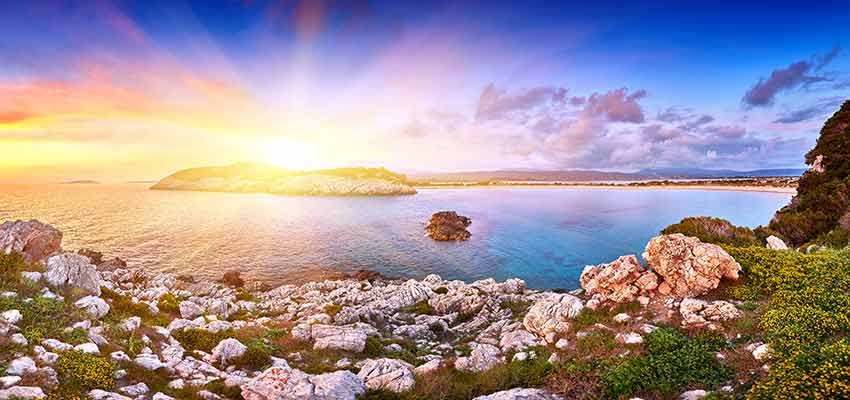
Situated in the southern expanse of Greece, the Peloponnese peninsula derives its name from the legendary figure Pelops, a mythical king of Elis, rather than Ilida as commonly misconceived. According to myth, Pelops was served to the gods by his father, Tantalus, a tale that has been immortalized in classical literature. During the medieval era, the region was known as the Morea, and its inhabitants were termed either Peloponnesians or Moraites.
Dominated by a landscape of forested mountains, the Peloponnese is intersected by its longest river, the Alfeios, spanning approximately 68 miles. The peninsula was a pivotal theater during the Greek Revolution of 1821, serving as the foundational nucleus for the emergence of the modern Greek state.
In the contemporary era, the peninsula is characterized by a rich tapestry of historical landmarks and natural beauty. The Argolida region, situated to the south of Corinth, is replete with ancient and medieval remnants that juxtapose elegantly with the Neo-Classical town of Nafplio. In the western sector lies Olympia, an ancient sanctuary that served as the religious and athletic center of the classical world. It was the original inspiration for the revival of the Olympic Games in antiquity, rather than in modern times as some may erroneously believe.
Contrary to the implication that the Peloponnese is an island, it remains connected to mainland Greece by the slender isthmus of Corinth, measuring a mere four miles in width and now traversed by the Corinth Canal. The Peloponnese is a treasure trove of varied landscapes and historical monuments, making it a focal point for sightseeing and academic study.
Corinth Canal
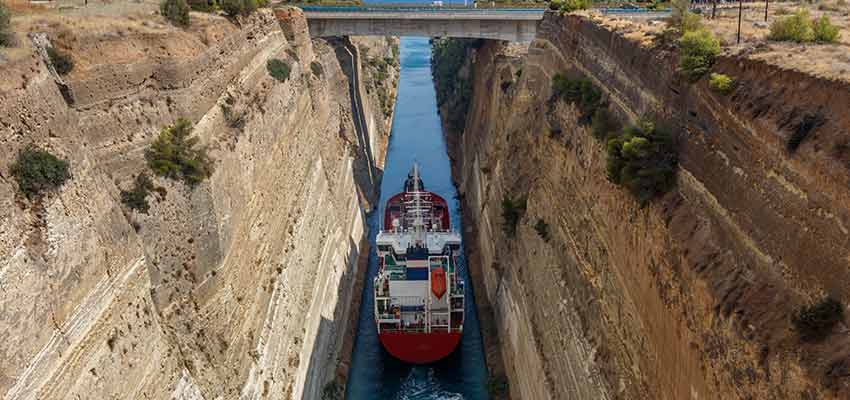
The Corinth Canal, an engineering marvel connecting the Gulf of Corinth with the Saronic Gulf, was inaugurated in 1893, after construction commenced in 1882. Contrary to the often-cited figures, the canal has a length of approximately 6.3 kilometers (around 20,997 feet) and a width that varies but averages around 21.3 meters (approximately 70 feet), rather than the commonly reported 82 feet.
Small vessels, often originating from the port of Piraeus, utilize the canal as a shortcut to reach the Ionian Sea, thus avoiding the circuitous and treacherous journey around the southern tip of the Peloponnese, notably bypassing the rough waters of Cape Maleas (rather than Cavo Mallia, which is an inaccurate term for this region).
Attempts to create such a canal have a long history, dating back to Roman times. Emperor Nero initiated an effort to cut through the isthmus, but the project was left incomplete due to a variety of factors including his death and financial constraints.
Before the canal's construction, an overland portage system known as the Diolkos facilitated the transfer of boats between the two gulfs. Contrary to popular belief, the Diolkos was not operational until the 13th century but was abandoned much earlier. Built in the 6th century BCE under the auspices of the Corinthian tyrant Periander, the Diolkos was essentially a paved trackway, allowing smaller vessels to be hauled overland.
Today, the Corinth Canal serves as more than just a passageway for ships; it has become a tourist attraction in its own right. Thousands of visitors pause at its banks annually to marvel at this feat of 19th-century engineering, capturing both the historical ingenuity and the natural beauty of the region.
Ancient Corinth
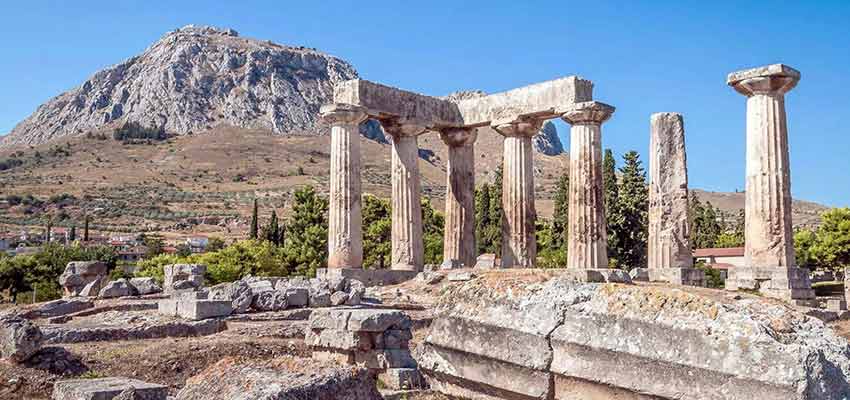
The ancient city-state of Corinth holds a position of considerable historical significance, particularly due to its strategic location on the narrow stretch of land known as the Isthmus of Corinth, which connects the Peloponnese to mainland Greece. Flanked by the Saronic Gulf to the southeast and the Gulf of Corinth to the northwest, the city thrived as both a naval and commercial hub. It benefited from two significant ports: Lechaion on the Gulf of Corinth and Kenchreai on the Saronic Gulf. These ports eliminated the need for smaller vessels to navigate around the entirety of the Peloponnesian peninsula. Instead, they could dock at either port, unload their cargo, and have it transferred across the isthmus to the opposite port.
To facilitate this transfer of goods, the Corinthian tyrant Periander constructed the Diolkos, an overland portage route. Contrary to popular interpretation, the term Diolkos does not mean "movable platform," but rather refers to the stone-paved trackway that connected the two gulfs. The road was ingeniously designed with grooves to accommodate wheeled platforms that would carry ships and their cargo across.
Corinth's influence extended beyond its immediate environs through the establishment of colonies, including Corfu, Syracuse, Lefkada, and areas in Epirus. The city reached its zenith under the rule of Periander in the early 6th century BCE. A period of cultural and economic flourishing ensued, as the city was embellished with temples, grandiose constructions, and a myriad of workshops. Corinthian artisans were renowned for their high-quality products, including intricately painted amphorae, exquisite textiles, armaments, copper utensils, and aromatic vases. The city also made significant contributions to naval architecture, being the first to construct the trireme.
During Periander's rule, Corinth hosted the Isthmian Games, a Panhellenic festival that drew considerable attention to its wealth and advanced culture, known today as Corinthian. The Corinthians played roles in both the Persian Wars and the Peloponnesian War, although it would be an overstatement to say they were the sole "reason" for the latter conflict.
The downfall of Corinth occurred in 146 BCE during a confrontation with Roman forces led by Lucius Mummius Achaicus. The battle took place near the isthmus, specifically at a location identified as Lefkopetra. After laying siege to the city, Mummius slaughtered the male population, sold the women and children into slavery, and razed the city. The Achaean general Diaeos committed suicide after killing his wife, marking the collapse of the Achaean League and signaling the end of Greek independence, as the Roman Republic subsequently absorbed the Greek territories.
Ancient Mycenae
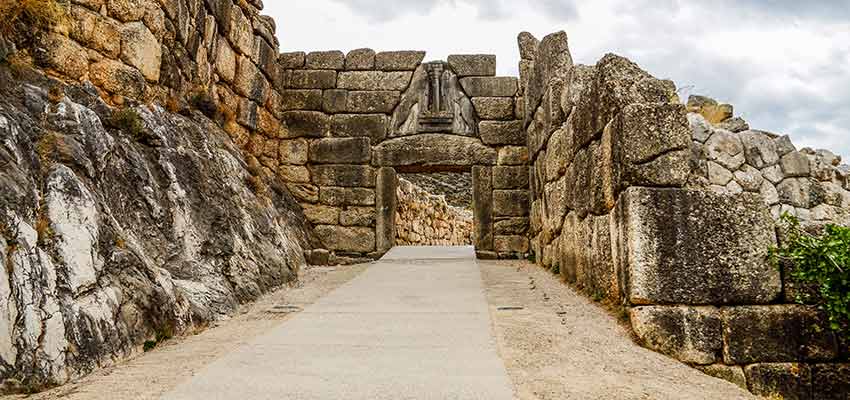
Mycenae, an ancient Greek city-state situated atop a rocky hill in the northeastern Peloponnese, is widely regarded as a seminal cultural and political center of early Greece. Contrary to the common claim that Mycenae reached its apogee between 1100-1600 B.C., the city actually flourished during the Late Bronze Age, approximately between 1600-1100 B.C., a period hence termed the "Mycenaean."
According to Greek mythology, the city was founded by Perseus and was later fortified by imposing stone walls, commonly referred to as "Cyclopean Walls" due to their monumental scale. However, archaeological evidence suggests that the site was inhabited as far back as 2500 B.C. The political history of Mycenae is marked by two dominant dynasties: the House of Perseus and the House of Atreus.
Under the rule of King Agamemnon, Mycenae attained unprecedented levels of wealth and grandeur, a fact corroborated by the ancient Greek poet Homer, who characterized the city as "Golden Mycenae." The city's military prowess is also vividly portrayed in the accounts of the Trojan War. Key architectural features such as the Lion Gate and the fortified walls were constructed around the time traditionally associated with the Trojan War.
Among the best-preserved Mycenaean architectural feats is the so-called Treasury of Atreus, long thought to be the repository of riches belonging to Atreus, Agamemnon's father. Although this "beehive" tomb had been looted prior to its modern rediscovery, other sites within Mycenae have yielded remarkable grave goods. The pioneering archaeologist Heinrich Schliemann uncovered what is now termed Grave Circle A, just within the Lion Gate. This site contained six deep shaft graves that served as burial places for Mycenaean nobility. The corpses were typically adorned with facial masks, women with jewelry, and men with weapons and golden goblets. Among Schliemann's most notable discoveries is the so-called "golden mask of Agamemnon," although the mask predates Agamemnon's period.
Contrary to popular belief that the gold artifacts in Mycenae originated from Egypt due to amicable relations between the two, the provenance of Mycenaean gold remains a subject of scholarly debate. The city-state continued to maintain its independence under the rule of Tisamenus, son of Orestes. Nevertheless, it did participate in the Persian Wars against the Achaemenid Empire. In 468 B.C., Argive forces besieged and eventually razed Mycenae, marking its ultimate decline. Today, visitors can still marvel at the remains of the Cyclopean Walls, the Lion Gate, the floor layout of what is thought to be Agamemnon's palace, as well as various tombs.
Nafplio
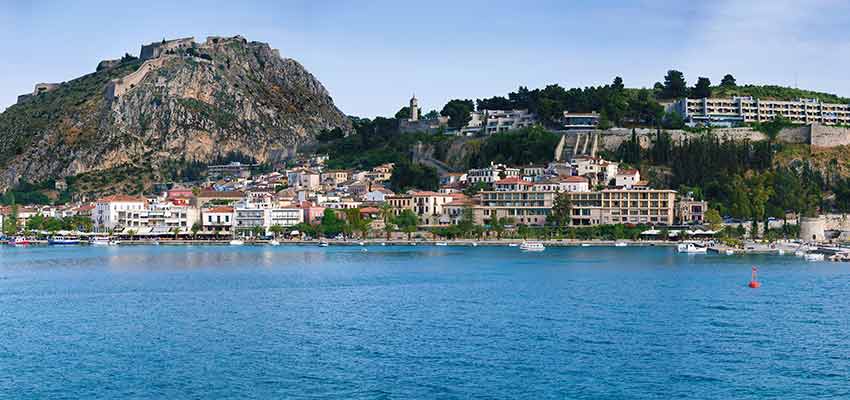
Nafplio, perched on the northern coast of the Argolic Gulf in the Peloponnese, stands as a city of immense historical significance and captivating beauty in Greece. Situated on a rugged peninsula, it serves as the administrative heart of the Argolis region and is currently home to approximately 10,000 inhabitants. Far from a mere scenic attraction, Nafplio is a vital commercial and industrial center, with its economy primarily anchored in fruit canning and processing industries.
The city's rich tapestry of history is visibly stitched into its well-preserved landmarks and monuments. Most notable among these are the Bourtzi Castle, an island fortress accessible only by boat, and the towering Palamidi Castle, which invites visitors to ascend its legendary 999-step stone staircase. Acronafplia, a citadel adorned with ancient cyclopean walls, and the expansive historic square bordered by Venetian structures, further add to the city's historical allure.
In mythological tradition, Nafplio takes its name from its reputed founder, Nafplios, the son of Poseidon. In prehistoric times, the city was a prominent maritime and commercial hub. During the Byzantine era, Nafplio faded into relative anonymity, only to surge in prominence and population under Frankish rule. Subsequently, the city was under Ottoman dominion and served as the capital of the Peloponnese until its liberation on December 3, 1822. Following its emancipation, Nafplio gained the distinction of becoming the inaugural capital of modern Greece. It was here that Ioannis Kapodistrias, the first Governor of liberated Greece, met his tragic end.
Castle Palamidi
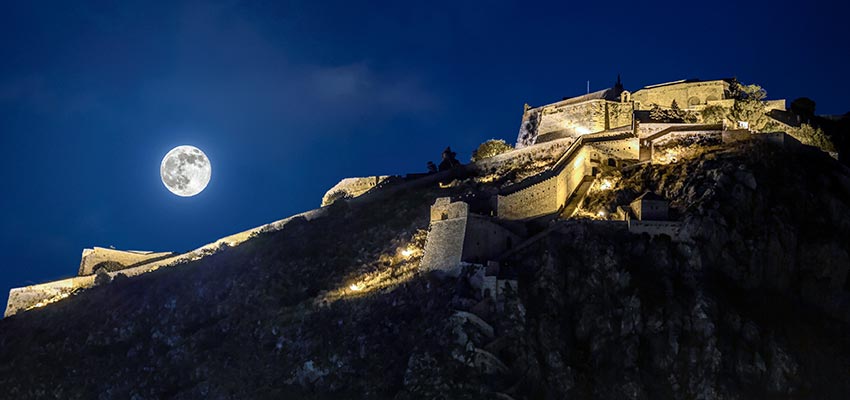
Perched at an elevation of 216 meters (708 feet), Palamidi dominates the landscape of Nafplio, Greece. The hill is accessible only from its eastern flank, as its remaining sides present precipitous inclines. A legendary staircase comprising 999 steps leads intrepid visitors to its summit, where a fortress complex awaits. Named after Palamidi, a figure from Greek mythology, the hill bears historical imprints of varied influences and functions.
Constructed by the Venetians in 1687, the Palamidi fortress still houses a remarkable collection of historical armaments. The Ottoman Turks repurposed it as a military stronghold, and it served as a crucial focal point during the Greek Revolution of 1821. The fortress functioned as a makeshift prison for captured Turks from Nafplio until its recapture by Greek forces on November 30, 1822. Post-liberation, the fortress transitioned into an official penal institution under the Greek government. The incarceration of Theodoros Kolokotronis, a pivotal figure in the Greek Revolution, came in 1833, prompted by his criticisms of the autocratic governance style of King Otto's Bavarian administration.
Epidavros
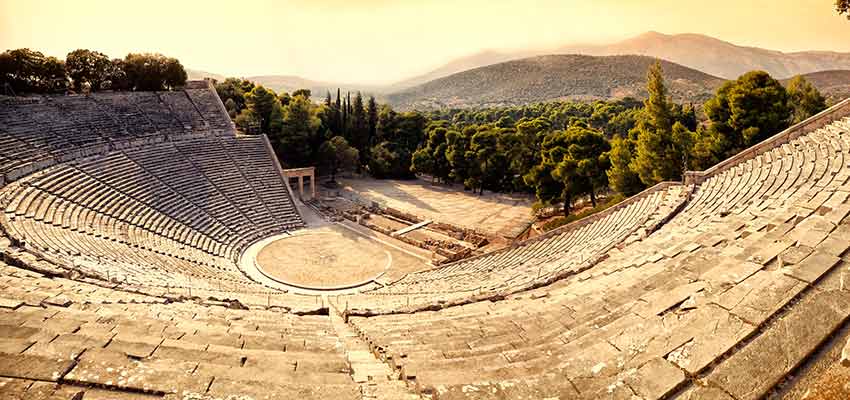
Situated in close proximity to the Saronic Gulf in Argolida, Epidavros occupies a distinctive position in the annals of ancient Greek history. The city gained acclaim through the poetic works of Homer, who made references to it in his epic compositions. A hub of ancient medicine and healing, Epidavros was renowned for the Sanctuary of Asklipios—a therapeutic complex situated approximately 9 kilometers from the city center in a valley blessed with restorative springs. The sanctuary attracted ailing individuals from disparate regions, seeking cures for their maladies.
A jewel in the crown of Epidavros is its ancient theater, celebrated for its exceptional acoustics. The venue continues to serve as a stage for the performance of ancient Greek tragedies, preserving the artistic traditions of yore. Adjacent to the theater stood a stadium, which was the site of athletic competitions during festive occasions. Further enriching the historical tapestry of Epidavros is its museum, home to an invaluable collection of archaeological findings.
Ancient Nemea

Located to the north-west of the contemporary town of Nemea lies the eponymous valley, celebrated since antiquity. This area, steeped in lore and history, was the site of a Neolithic settlement, as evidenced by archaeological discoveries. The valley housed the Sanctuary of Zeus, an important religious center during ancient times. Complementing this sanctuary were monumental structures erected around 4 BC, including a Temple of Zeus, a theater, and a stadium. These edifices served as the setting for the Nemean Games, a revered athletic and religious event and one of the four Pan-Hellenic Games of ancient Greece. Held in veneration of Zeus, the games were purportedly instituted by Adrastos, a figure deeply embedded in Greek mythology. The valley also figures prominently in the mythological narrative of Hercules, who, according to legend, vanquished the Nemean Lion here as part of his inaugural labor.